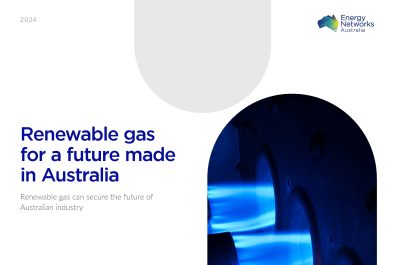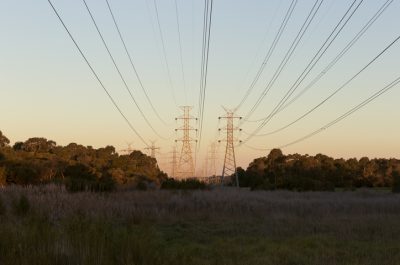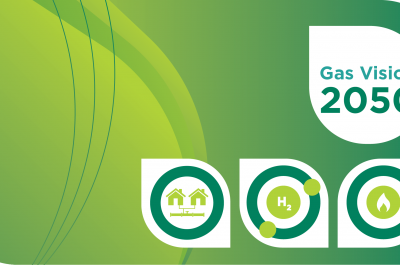Dear Santa: an energy wishlist
The festive season is upon us and what better way to celebrate than a wishlist for Santa Claus that ensures that customers are at the forefront of the rapidly moving energy transition.
Continued engagement with market bodies
This year has seen great improvements in engagement between market bodies and the rest of the sector. There has been an increasing willingness to work collaboratively rather than simply to inform stakeholders.
We hope this maturing of engagement practice continues into 2022.
The ENA elves know genuine collaboration between market bodies, the energy sector, and most importantly customers, will deliver better outcomes for all.
Importance of climate change resilience
As Santa surveys the melting ice of his South Pole pad, he is no doubt thinking about climate change. Our changing weather is causing unprecedented impacts that are only increasing in their frequency and severity. We’ve experienced bushfires, floods, severe storms, cyclones and droughts in just the past two years.
Resilience from the impacts of climate change, especially for critical assets like our electricity network, is crucial and in the long-term interests of customers. The regulatory framework needs to adapt to address these risks.
Transition to Electric Vehicles
Many forecasts indicate there will be a significant uptake of EVs the next decade, resulting in a range of consequences for distribution networks. Networks have been working with research organisations and other bodies to understand the impacts of EVs on the grid and how to best manage them to deliver maximum benefits to customers and the electricity system.
What is clear from the work so far is that faster uptake of EVs in Australia depends on some key factors. Customers need to be more comfortable with the technology, networks must better understand the impacts on the grid, vehicle prices need to fall, and their availability needs to increase.
Building social licence for major energy infrastructure
While many Australians want renewables, we have not sufficiently advanced the conversation as a community about how we get these new sources of clean energy to where it is needed – or how the infrastructure is paid for.
Energy generated by wind and solar farms needs to be transported to customers along new and advanced transmission infrastructure. Unfortunately, there is consternation in affected communities about plans, routes, amenity and compensation.
The energy industry and related community sector have been working to resolve these issues and build genuine stakeholder engagement processes into projects. This is essential as there can be no transition to a renewable energy future without improved transmission and a more interconnected grid.
The industry needs to get the social licence settings right. All customers, including the vulnerable, pay for transmission developments, so a balanced approach to community benefit and compensation issues is vital to ensure we can get on and build this essential infrastructure.
Delivering transmission
Renewable generation from solar and wind is intermittent. We still need dispatchable power for when the wind isn’t blowing and the sun isn’t shining. The two large pumped hydro plants in Tasmania and the Snowy region could provide this but only with new transmission to support the increased generation.
The National Electricity Market (NEM)is an interconnected transmission system. Supply and demand need to be balanced every second throughout the year. Tasmania’s Marinus Link, NSW’s Humelink and Project Energy Connect between SA and NSW are among a range of new transmission projects to help achieve this. This does mean that fair cost allocation is required to share the costs of the large backbone of transmission work across states, but over time all states and consumers will benefit.
Contestability needs to be done right
If contestability in the delivery of transmission infrastructure is to be adopted, then there should be demonstrated evidence provided that it will lower long-term total system costs and is in the best interests of consumers. The costs and benefits of contestability, including the additional transaction costs and new bodies, the increased complexity and administrative burden should be clear. It is important the benefits outweigh these additional costs, and the new entrants are appropriately registered in the NEM and licenced. If electricity consumers pay for these new arrangements, there should be meaningful consultation and transparency of the costs as decisions are being made.
Renewable gas switching gears
Renewable gas is gas’s equivalent to solar and wind for the electricity sector. The production of renewable gas relies on that same solar and wind energy but can also be produced from other organic waste materials such as those found in landfills, where renewable gas is already produced but generally burnt to generate electricity. The linkages to solar and wind can create a higher utilisation for renewable generators and improve the business case for new large scale solar and wind farms.
2021 has been an important year for renewable gas with hydrogen blending projects starting in Adelaide and Sydney, renewable gas certification for hydrogen and biomethane progressing and additional funding being made available through the federal government.
The role of hydrogen in our future energy system is becoming increasingly recognised. AEMO’s draft integrated system plan includes a hydrogen superpower scenario. Including hydrogen in these long-term plans demonstrates its potential role to help decarbonise the economy and to export renewable fuels to the world. To complement this, an increased focus on a supporting domestic industry via blending in gas networks is needed.
Renewable gas has become a thing. The opportunities in 2022 and beyond are to demonstrate the real potential of renewable gas to decarbonise the economy at lowest cost while maintaining energy security.
Flexible and innovative regulatory framework
Just as Santa needs to be flexible enough to make it down seemingly tighter chimneys each year (chimney investment must be declining, or mince pie investment increasing), the regulatory framework needs to remain flexible enough to deliver on changing customer preferences.
New innovative approaches to regulation such as the regulatory sandbox toolkit and the Better Resets Handbook demonstrate progress towards a fair, flexible framework that’s responsive to customer priorities. Implementing these innovative regulatory methods might not be straightforward to begin with, but we’re confident that collaborative engagement will be able to chart a productive way forward.
Finally, as we emerge from the shadow of the global pandemic and see off 2021 with some well-deserved celebrations, we wish our Energy Insider readers a Merry Christmas and a happy new year.



